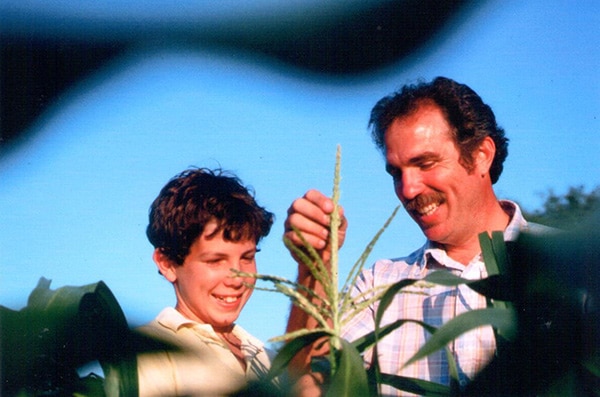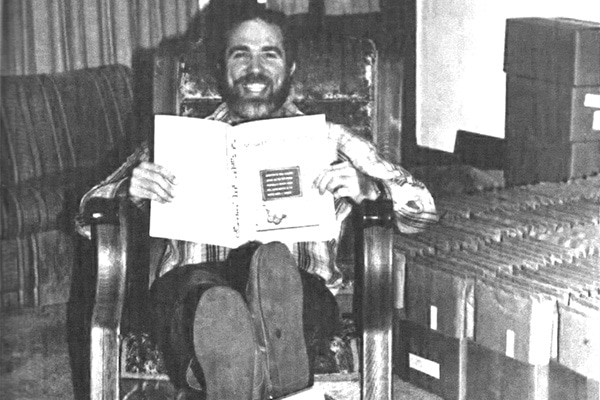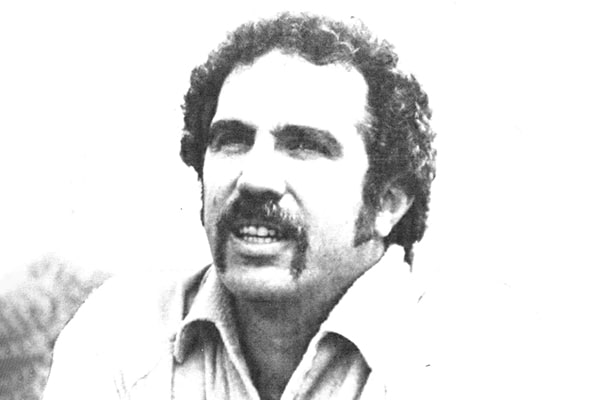Whealy
The Preservation Garden
From 1985 Harvest Edition, Seed Savers Exchange · What in the world would ever cause two men and a boy to try to grow out over 2,000 varieties of garden plants on five acres? The main reasons were two seed collections totaling nearly 5,000 varieties, and the result was that most fantastic display of heirloom vegetable varieties that anyone has ever seen. We learned a tremendous amount from that garden this last summer. And we also used it to create more interest about heirloom varieties — through national publicity and locally with garden tours — than anything else we could have possibly done.
Read MoreKeynote Speech at Common Ground County Fair
My name is Kent Whealy and I’m the director of a non-profit organization of vegetable gardeners known as the Seed Savers Exchange. The Seed Savers Exchange is actually a preservation project which is trying to save what remains of our vanishing vegetable heritage. The majority of the vegetable varieties currently available to gardeners may be lost within a few short years unless drastic action is taken. We are actually working with two groups of seeds: heirloom varieties, which are seeds that are passed down from generation to generation within certain families; and also with commercial varieties, which are currently being dropped from seed catalogs. I would like to spend my time with you today telling you about how the Seed Savers Exchange got started, what we are trying to accomplish, what heirloom varieties are, the problems we all face relating to the loss of genetic diversity, and how we as backyard gardeners can help to turn the situation around.
Read MoreHarvest Campout Introduction 1985
The fifth Annual Campout Convention of the Seed Savers Exchange was held on July 20-21, 1985 at the Pine Bluff 4-H Camp. The Camp is located six miles northeast of Decorah, Iowa and includes 115 acres of pine-covered bluffs, beautiful trails and a suspension bridge over the Upper Iowa River. This year attendance almost tripled because many of our members wanted a chance to look at the five-acre Preservation Garden containing 2,000 rare varieties which was just over the back fence. The magic of the Campout is that it brings together a diverse group of people who share the common bond of working to preserve our seed heritage. This year’s gathering was so high-powered that it’s going to be really hard to top it next year.
Read MoreIntroduction to The Garden Seed Inventory
The Garden Seed Inventory represents your heritage as a vegetable gardener. The diversity and quality and number of garden varieties now being offered commercially is almost beyond belief. Gardeners in the United States and Canada are truly blessed. But it is quite possible that half of everything listed in this book could be extinct within the next few years! The major forces threatening this diversity include: plant patenting legislation; takeovers of seed companies by multinational corporations; plant breeding for machines instead of gardeners; the profit-motivated hybrid bias of most seed companies; and increasing bankruptcies of small businesses.
Read More1981 Harvest Tucson
“I’m Kent Whealy and I direct an organization of vegetable gardeners known as the Seed Savers Exchange that maintains and also exchanges heirloom vegetable varieties. I’ll be telling you more about the organization tomorrow, but what I really want to talk to you about today is some work that I have become very interested in recently.”
Read MoreSeed Savers Exchange Grant Proposal
There is a world-wide crisis that few people know about, but that may very well determine how hungry the world is in the future. The scientific community and laymen around the world are voicing increasing alarm about the genetic wipe-out of our food crops and their ancestors. Two specific areas of this crisis which have received almost no consideration are the extinction of both “heirloom” vegetable varieties and also the vegetable varieties currently being dropped from seed catalogs.
Read MoreWhatever Happened to the Vegetable Variety Inventory? or The “Apple” of my Bloodshot Eye
To get right to the point, the Vegetable Variety Inventory is only about one quarter complete. I still need almost 60 16-hour days to complete it and it is unrealistic to think that I will have time to get it done before Christmas, I have spread myself too thin. I always think that I can just knock things out in no time at all, but I’ve never taken on anything this big before. I really had no idea what a massive task it would be.
Read MoreFall Harvest Introduction
I first estimated that this “Fall Harvest Edition” would reach you during October. I figured it would be nice to receive it about the time when many of you were harvesting and working with your seeds. But I decided that I wanted to write most of it after I had attended the Seed Banks Serving People Workshop which was held in Tucson in mid-October. Many of the people that you have read about in the Seed Savers Exchange were speaking at the Workshop and I wanted to bring you their words so that we could all learn from them.
Read More1981 Harvest Tucson Intro
I recently had the pleasure of being part of a unique workshop that was held in Tucson on October 13 and 14. I would be surprised if there is ever another that even closely resembles it. I came away riding a warm wave of friendship and enthusiasm like I have never felt before. It was so incredible that I was even a little down just because it was over.
Read MoreThe Bean Men
I was finally going to meet John Withee. We were both in Tucson to speak at the Seed Banks Serving People workshop. I’d had a display case built so John could display his collection at the workshop. I was going to send it to him to fill in Massachusetts, but time had gotten too short and he had brought samples of about 800 different heirloom beans to Tucson. It was the day before the Conference and Aaron and I were taking the display case to his motel to help him fill it.
Read More


